Dame Mary Quant, Promoter of the Miniskirt, Dies at 93
- Oops!Something went wrong.Please try again later.
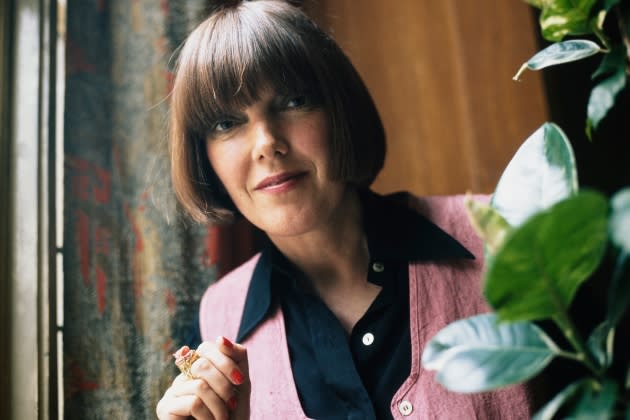
LONDON — Dame Mary Quant, who transformed women’s fashion around the world in the ‘50s and ‘60s with her short hemlines and bold patterns, died Thursday, at 93 years old.
Quant, whose name was synonymous with London’s Swinging ’60s and its fashion, offered young women a new, more liberated way of dressing, free from the girdles and restrictive undergarments that their mothers and grandmothers had worn.
More from WWD
She popularized tights, making them in a rainbow of colors, and dressed a generation of women for work and play in her short “mini” skirts, HotPants and flat shoes.
Quant’s family said in a statement to Press Association that she died “peacefully at home” in Surrey, England, on Thursday.
Her family described Quant as “one of the most internationally recognized fashion designers of the 20th century, and an outstanding innovator of the Swinging ’60s.”
Quant was born in 1934 in Blackheath, southeast London, and studied art at Blackheath High School. She later attended Goldsmiths University in London, graduating in 1953.

Two years later, she opened Bazaar, a boutique on King’s Road. True to its name, the store sold a melange of items, from Quant’s own designs to artwork and jewelry made by her friends from university.
Frequented by stars including The Rolling Stones and Audrey Hepburn, Bazaar quickly became a hot spot thanks to its atmospheric setting paired with its revelatory items that were a far cry from the utilitarian, wartime styles of the ’40s.
In 2019, Quant was honored with a blue plaque outside 138A King’s Road, the original site of the boutique. The plaque’s unveiling took place during London Fashion Week that year.
In 1958, inspired by the Mini car, Quant gave her short skirts the name miniskirt. By 1961, Quant had opened another Bazaar in Knightsbridge, which was as successful as its predecessor, prompting global demand for her designs.
She exported what became known as the London Look to the U.S. through a deal with JCPenney. Her designs landed there in 1965, four years before The Beatles came.
The Museum at FIT’s director Valerie Steele described Quant as “certainly an iconic figure in the history of fashion and deserves to be.”
“She said, “The fact that the miniskirt keeps coming back as a fashion trend every few years is a testimony to how powerful that image was. She’s not the only one, who created it. But she was seminal in creating this image of it being a London and Youthquake development. That’s been entered into fashion history.”
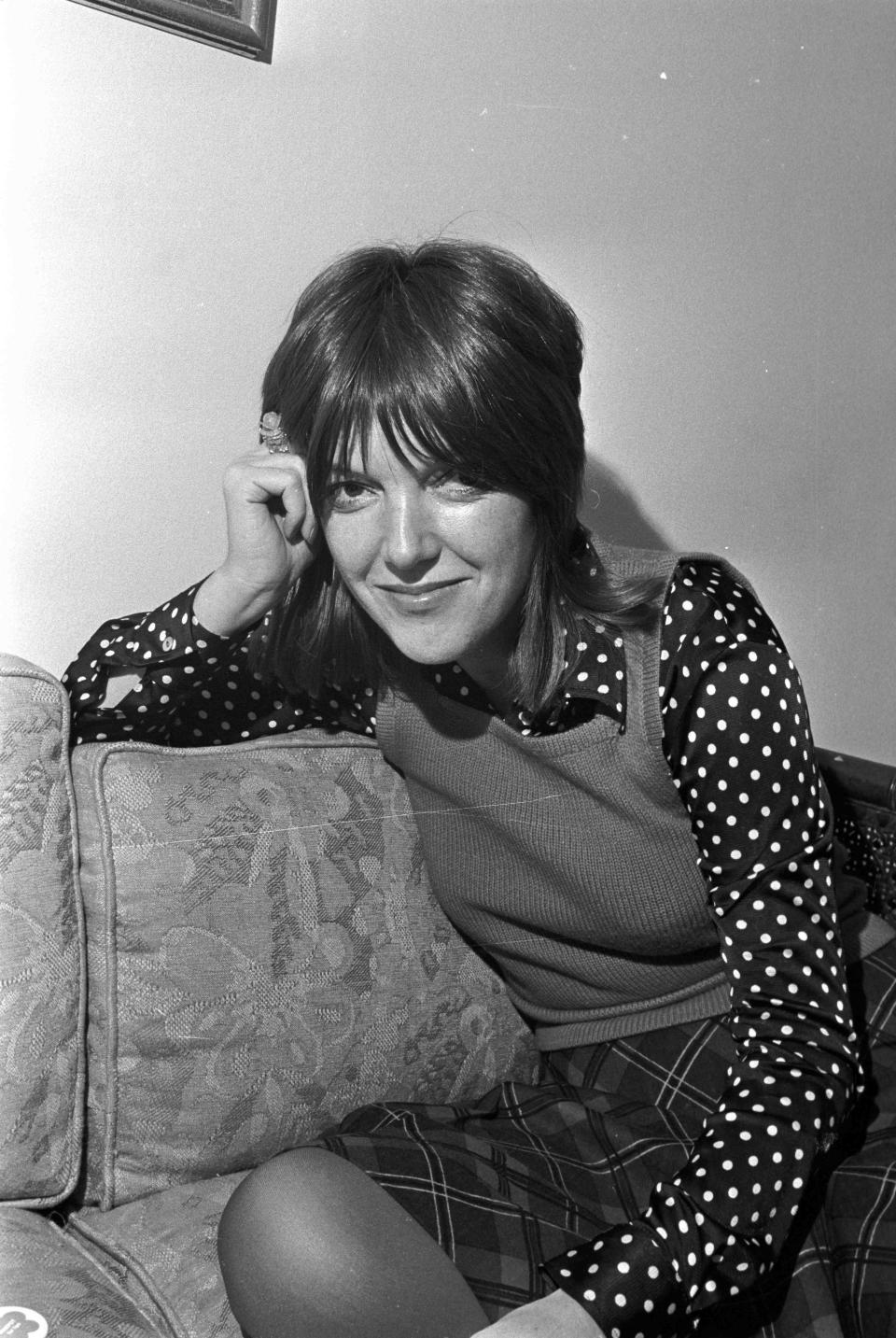
Finding Mary Quant dresses today is no easy task, according to Steele. “I think it’s because people really wore her dresses to death. We have two in the collection, whereas with Courrèges and [Pierre] Cardin, you can get those clothes because people wore them for six months and stopped wearing them.
In her autobiography, Quant explained that adult appearance was unattractive to her and something that she knew that she didn’t want to grow into, Steele said. Always intent on “wanting the young to have a fashion of their own, and wanting to make clothes that would be fun to wear,” Quant started making such clothes for herself and others, she said.
“She didn’t really know how to do that. She said she took a few frantic evening classes and she had no idea that you could buy fabric wholesale. So she bought her material over the counter at Harrods, worked in her bedroom running up these little dresses with her Siamese cats eating the paper patterns. It was just totally chaotic.”
But as soon as those creations were placed in window displays, they sold out right away. After her clothes were featured in fashion magazines, Quant “seemed to have a really fast learning curve, just going onward and upward.” Steele said.
While London had a ready-to-wear industry when Quant came of age, it tended to be people like Quant, [Marion] Foale and [Sally] Tuffin, who started to create “really advanced clothes in a sort of unprofessional way and yet immediately getting the following of young people. Tuffin and Foal were doing pantsuits long before Saint Laurent got the credit for them,” Steele said.
Traveling to New York, Quant learned how Americans mass produced ready-to-wear and “glommed onto that idea really fast,” Steele said. “The clothes weren’t mega-cheap, but they were less expensive than many other clothes that were being produced. They were certainly in the spirit of the times. They then started to be exported and sold in the U.S. and she really became popular.”
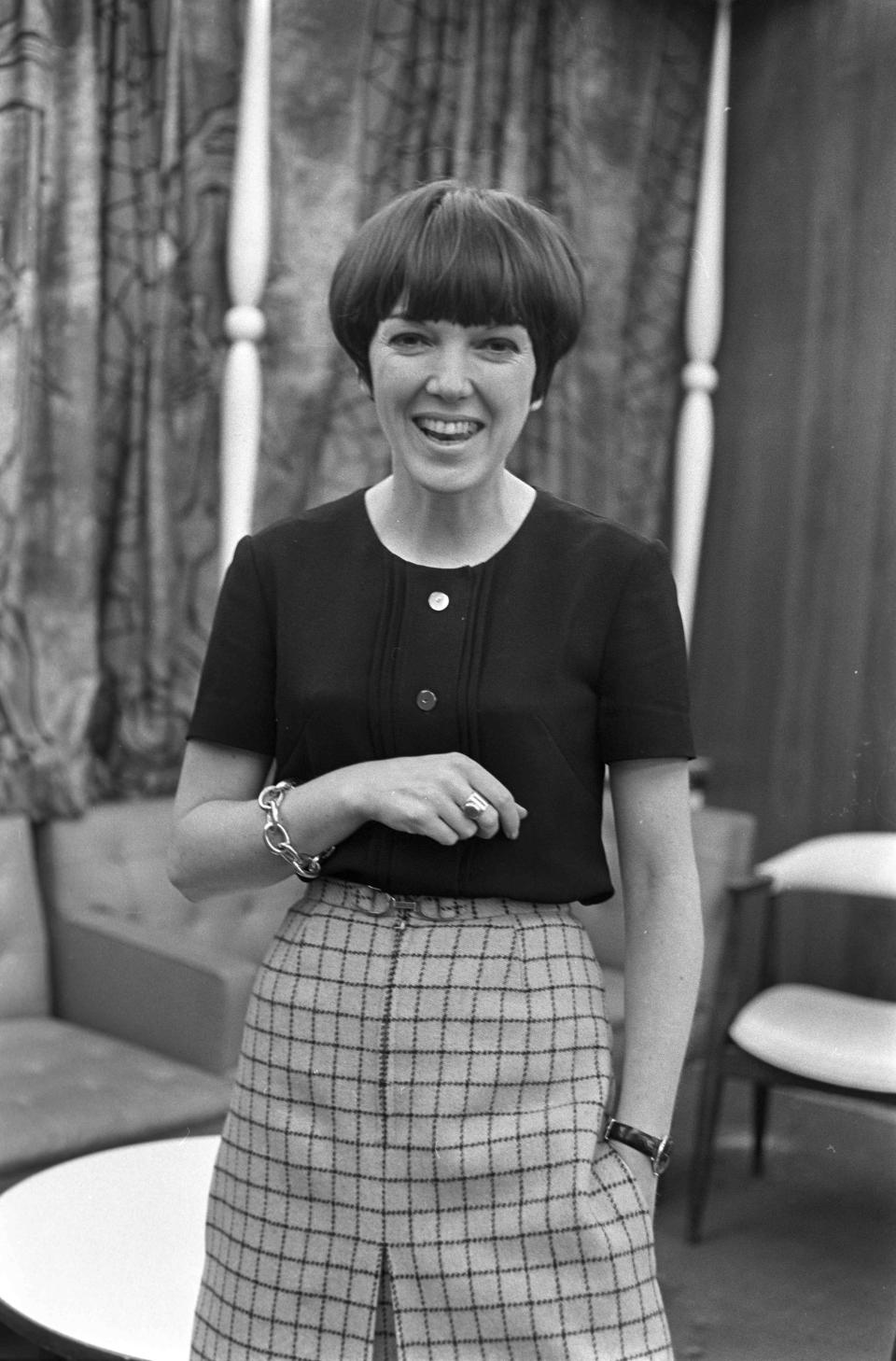
When Courrèges started doing his Space Age-inspired minidresses in 1964, he claimed that he invited the mini and that Quant only commercialized the idea. Quant’s reply was “That’s just how the French are. I don’t mind but that’s not as I remembered it. Maybe Courrèges did do miniskirts first. But if he did, no one wore them.” Steele said. “Later on, she said, ‘Actually it wasn’t me or Courrèges who invented the miniskirt. It was the girls in the street who did it.”
In the late ‘60s, she launched the HotPant, her take on shorts, and laid the groundwork for fast fashion, lifestyle branding and even streetwear trends.
But Mod queen Quant was about so much more than the miniskirt. Even her bobbed hairstyle — made famous in a photo with Vidal Sassoon — had a major impact.
And not only did the designer embrace mass manufacturing and easy care synthetic fabrics such as PVC, Crimplene, acrylic wool and acetate, she thought far beyond clothing, developing a license-heavy lifestyle brand that came complete with lingerie, tights, footwear, accessories, costume jewelry, color cosmetics, interior designs and a Daisy toy doll range meant to rival Barbie.
Quant’s heels were low and her bras and underpants lightweight and supportive, thanks to Lycra. She dressed customers in colored, textured tights — no garter belts there — and relegated painfully constricting girdles to history.
The designer also took the radical step of producing tailored trousers and suits, in wools meant for menswear, which she used to buy at retail from Harrods and then dye in bright colors. She stretched that menswear aesthetic into gray tweed dresses with tops like suit vests, and made blouses with oversize neckties, always poking fun at convention and looking to unleash female power.
“I believe women working in design today owe a lot to the wonderful Mary Quant. She was one of the earliest individuals to break the boundaries for women in the British fashion industry and beyond. She helped define the look of an era for women who wanted to be free and express a youthful exuberance, her influence on the silhouettes of that time can’t be underestimated,” said Clare Waight Keller on Friday morning.
“She was a pioneer with shape and fabric that was copied far and wide. A strong and opinionated character who believed in the power of fashion to liberate. Mary was the one to make the mini skirt and hot pants the most sort after look of the 60s, she always stood out as an innovator ahead of her time. The ultimate cool girl designer of the 1960s,” she added.
Quant went on to publish numerous books including “Colour,” “Quant on Make-up” and “Classic Make up & Beauty Book.” In 2011, she released her second autobiography.
In 1966, she launched her cosmetics line, Mary Quant Cosmetics, which became a pillar of her business, especially in Japan, and it still operates today. She resigned as director of Mary Quant Ltd. in 2000, following a takeover by a group of private Japanese investors.
Those deals, and her thriving wholesale business, kept the designer so busy — and prosperous — that by 1970 she had shut all three of her Bazaar retail shops in London, on the King’s Road, in Knightsbridge and on Bond Street.
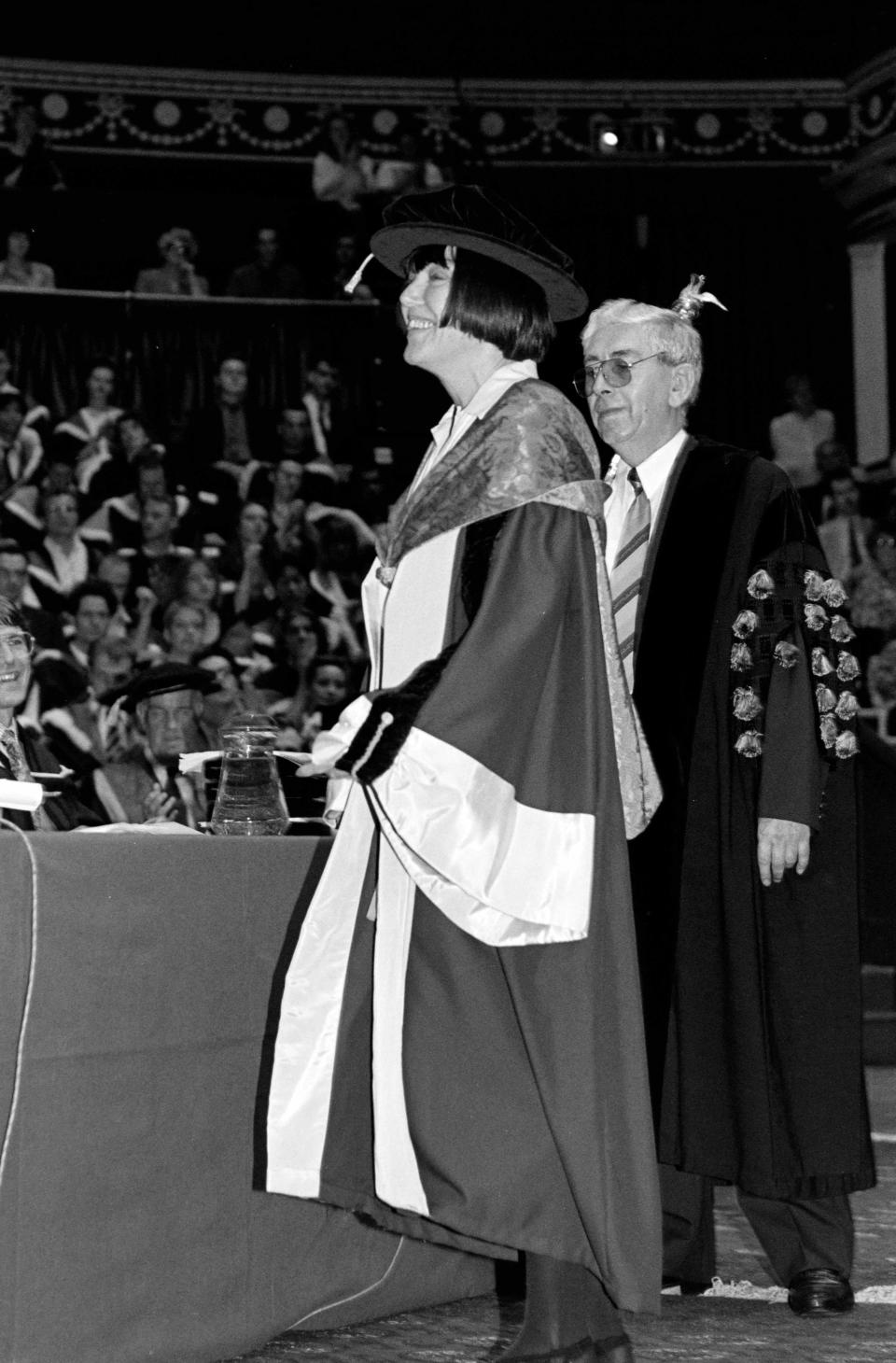
“She was a brave innovator who was constantly modern, willing to shock and blessed with a business and personal partner, [Alexander] Plunket-Greene, who could help turn her ideas into reality,” said Sir Paul Smith.
They made for an entertaining couple — Plunket-Greene with the nattily disheveled air of the upper-class Englishman and the shy Quant, whose voice was so soft it was sometimes difficult to hear her. Lunches with them could stretch for hours into teatime, as the wine continued to flow and Plunket-Greene would astutely talk about fashion, retail and plans to expand the Quant brand.
“She really did revolutionize fashion and make it available for young people. I am saddened that another great English designer has passed away,” said Joan Burstein, cofounder and honorary chairman of Browns with her husband Sidney, in the ‘70s.
Bruce Oldfield said that in the ’90s he used to “bump into Ms. Quant in La Picena, a small Italian deli on Walton Street. I recognized her immediately, and on first meeting her I plucked up enough courage to say hello. I had been aware of her style, looks and spirit from my teenage years, so I felt that I was truly meeting a legend, someone who defined the spirit of the ’60s.”
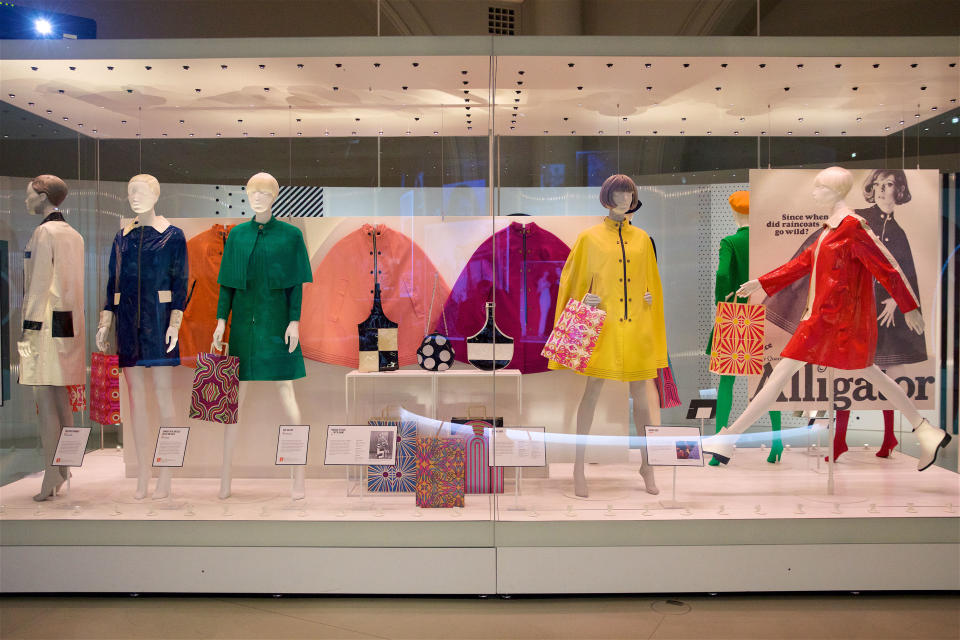
“Mary Quant was the first designer of the swinging ’60s who put the U.K. into the number one fashion spot with her distinctive Vidal Sassoon haircut and mini skirt she took the world by storm, yet she was amazingly shy and unassuming. I was still at the Royal College when I saved up to buy one of her mini dresses! I am so proud to have known her and lived through the pioneering generation she paved the way for,” said Zandra Rhodes.
Designer Barbara Hulanicki met Quant when she was freelancing as a WWD fashion illustrator. “Personally, I was being a fashion freak. I was dying to have one of her skinny, ribbed sweaters, which she was the first to do. Alexander [Plunket-Greene] was an amazing PR, too,” Hulanicki said. “Fitz and I were married and were terribly excited to start a business. They were the first young couple that started a fashion company. That a very big part of their story. She was terribly clever. It was a Courrèges-y direction.”
Hulanicki reminisced about how Quant tapped into the young generation like no other. Working a lot with money to spend, Hulanicki said she felt fashion options were nill. “Mary really cracked that awful divide between the young ones and the Ladies Who Lunch,” she said.
American philanthropist and fashion collector Sandy Schreier met Quant in London through Vidal Sassoon, who swayed Schreier to leave her young children for a few days to model for him. She immediately hit it off with Quant. A night on the town with Quant, Zandra Rhodes, Hulanicki and Sassoon and his designer cousin David was nonstop laughter and conversation, Schreier said. “These were the biggest and hottest designers in the world in the ’60s. I was a suburban housewife from Michigan and they were just real, normal people. That was what was most impressive to me,” she said. “My friends, who are designers are just real normal people. That’s what Mary was the most.”
The designer never thought of herself as revolutionary. Quant enjoyed doing what everyone else did – going out, enjoying good food, having fun, joking around and chatting about husbands. Later in life, Quant She was as lovely when I last saw her as she was when I met her in the Sixties. She never wanted to make waves. She was like Vidal [Sassoon] always surprised if someone recognized her.
Quant’s ascent was due partially to being attuned to societal shifts. “After Christian Dior turned the world around with the “New Look” in 1947, everything became that very sweet and girl-next-door look in the Fifties and early Sixties. Everybody was ready for something new and Mary was in the right place at the right time. London was really happening.”
Stephen Jones, who met the designer a handful of times, said, “She was a huge influence on youth culture and a very formative influence on me. I remember in the early ’60s my sister owned a pair of Mary Quant boots in transparent plastic, with different colored socks that fitted inside them.
“To me, who possessed only black school lace-up [shoes], white tennis shoes or football boots, this was a complete revelation of design. During punk times, I used to wear Mary Quant Lurex knitted T-shirts. Although they looked fabulous on the night club floor, they were the equivalent of wearing a pan scrubber,” Jones said.
“When I curated the exhibition ‘Hats: An Anthology by Stephen Jones’ in 2009, we exhibited a Mary Quant beret from the Victoria and Albert Museum collection next to a Schiaparelli beret owned by Marlene Dietrich. To me this hat was the universal hat of our times and I have to say 14 years later it still is,” he added.
Quant was the subject of a retrospective at the V&A in 2019 — 50 years after her last show at the museum.
The showcase explored Quant’s work between 1955 and 1975, taking a fresh look at the designer in the context of the #MeToo movement, and the new momentum behind women’s rights.
“She has been sidelined because she’s not a couture designer,” said Stephanie Wood, who cocurated the V&A show with Jenny Lister.
Wood said it was the right time to view Quant in the “post #MeToo era, given the fact that she liberated women from stifling rules and regulations.”
In July 2018, the V&A did a call-out on social media with a “WeWantQuant” campaign to collect rare Quant garments. They received more than 1,000 responses, and whittled them down to 35 looks from 30 women. Looks included a short dress with a frilled neckline and sleeves, and a rainbow lineup of A-line PVC raincoats and capes. All 35 items were on display with charming personal stories and photographs.
The bulk of the show, however, was drawn from the archive of Quant.
“It’s impossible to overstate Dame Mary Quant’s contribution to fashion. With her unique sense of humor, style, and determination to democratize and share the fun and creativity of her designs, she provided a new kind of role model for young women, creating a space for them to be themselves,” Lister said.
“She helped to define Britain’s global identity as a center of streetstyle and innovation, with signature looks such as PVC macs, colourful tights, and the skinny-rib sweater,” Lister added.
“Forever associated with the miniskirt, and her iconic daisy logo, Mary Quant will always represent the joyful freedom of fashion in the 1960s. She blasted through barriers of snobbery and tradition, with her vision of fashion as a way of resisting stereotypes, with well-made clothes and cosmetics that were empowering and liberating, as well as affordable. Fashion today owes so much to the revolutionary, trailblazing Mary Quant,” Lister told WWD on Thursday.
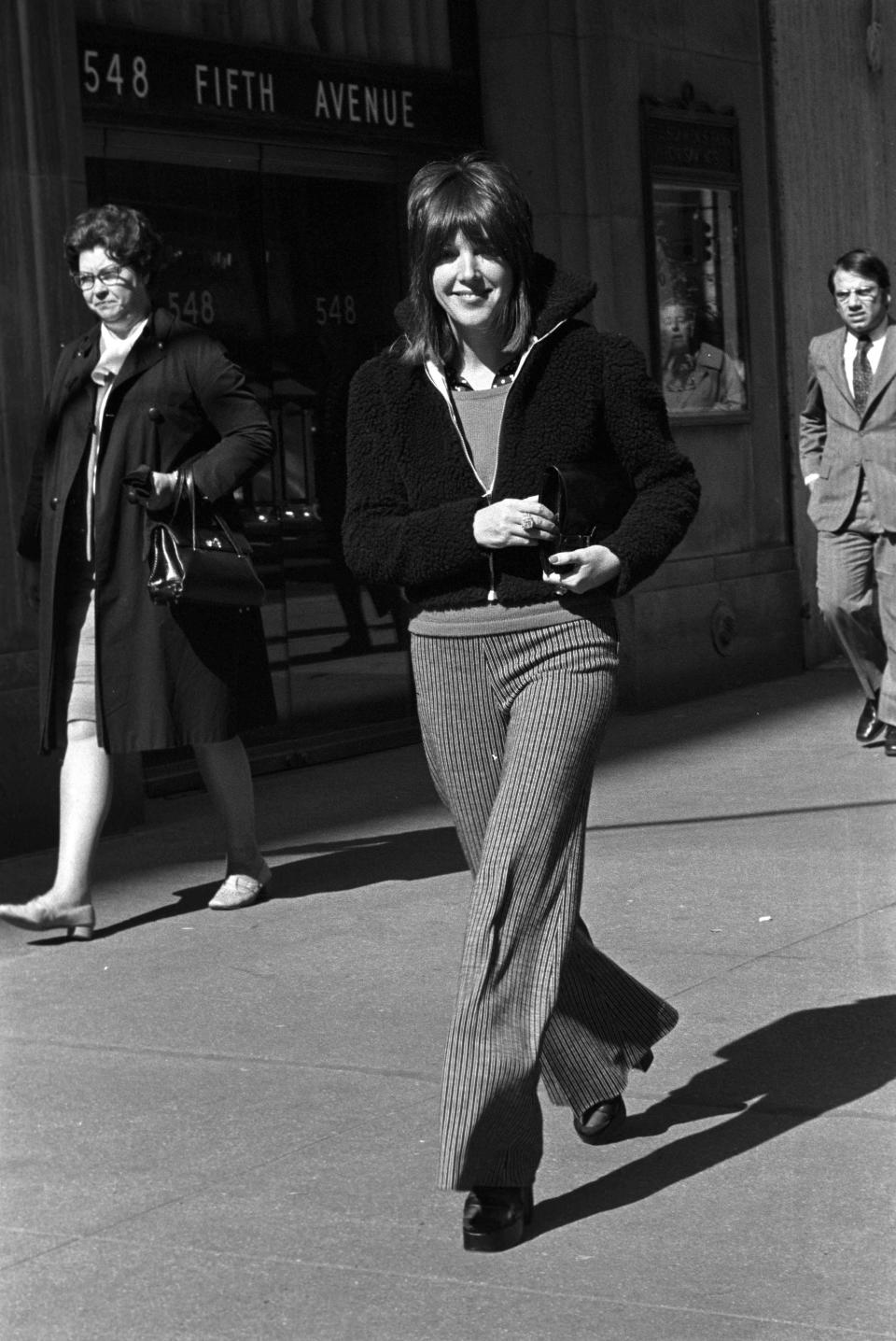
In 2021, the celebrated designer was also the subject of English actor Sadie Frost’s debut documentary “Quant” in 2021.
“It’s such a colorful story that it didn’t feel like I was doing a straight-up, factual documentary. It was about bringing out the femininity, the coquettishness, the humor and really making a stance on women’s rights and how the role of women has changed,” Frost told WWD at the time.
The documentary was presented as part of the London Film Festival.
“What Mary created over her career span of decades was so vast and should never be forgotten. For me it was a real admiration of another woman and understanding that it hadn’t always been easy for her,” Frost added.
Frost spoke to Quant through her son via various messages and got her blessing before releasing the documentary.
In the film, Quant’s son, Orlando Plunket-Greene, weighs in on the film alongside British industry heavyweights including Charlotte Tilbury, Kate Moss and British Vogue editor in chief Edward Enninful, who highlights how Quant was ahead of her time in casting models of color and shaping a new standard of beauty.
Quant received an Order of the Companion of Honour, or CH, for her outstanding achievement in British fashion from King Charles III, in his first New Year Honors list as monarch. The award is limited to just 65 people at any one time.
She was made a dame in 2015 by Queen Elizabeth II.
Betty Jackson remembers her for “leading the way for all of us — years before — and was inspirational in so many ways. She showed us how to think about being young, new, modern and fearless — with color and simple silhouettes never seen before.”
Fashion critic Marylou Luther said Thursday, “Mary Quant was, to me, the mother of fashion in the 1960s — my favorite fashion decade. Her miniskirts became the uniform for the MODs, who literally lifted fashion to new highs.”
She also noted the fact that short skirts are back in fashion is a sign of Quant’s lasting influence. Luther recalled a memorable moment with the bubbly designer. “Her energy and positivity followed her wherever she went — including a trip into my arms, after one of her shows.”
Best of WWD

